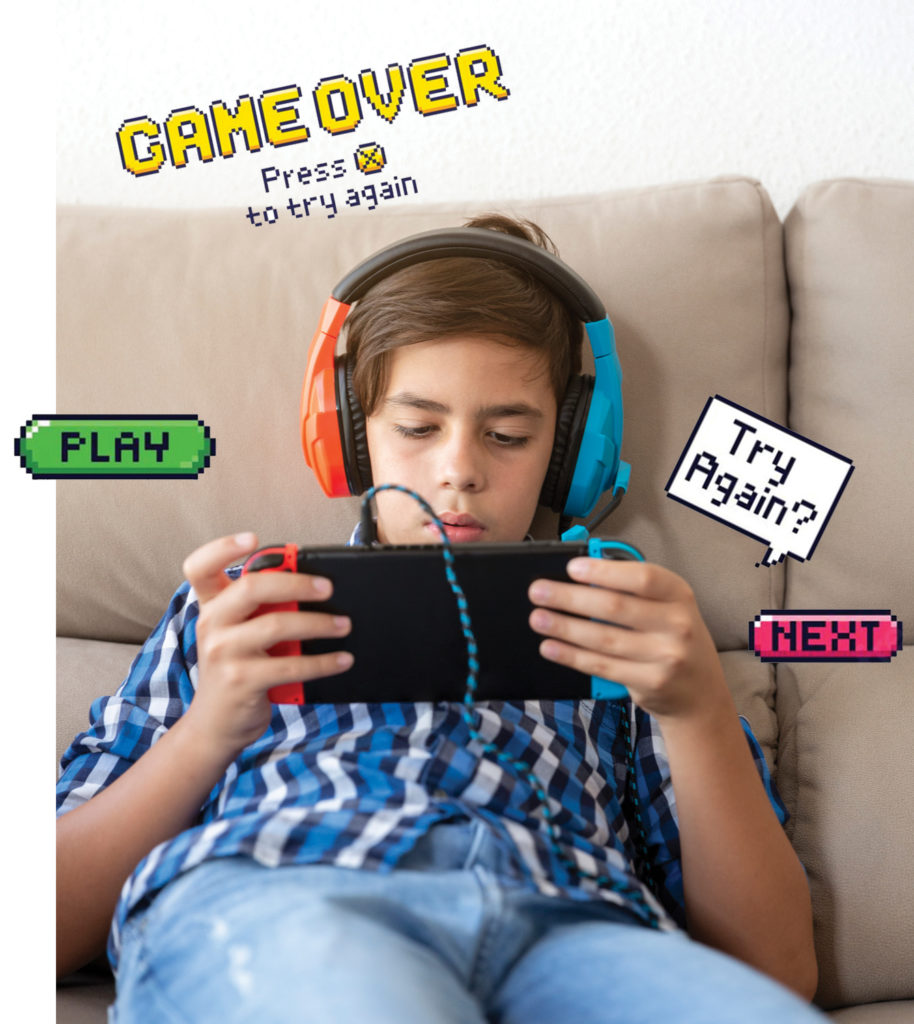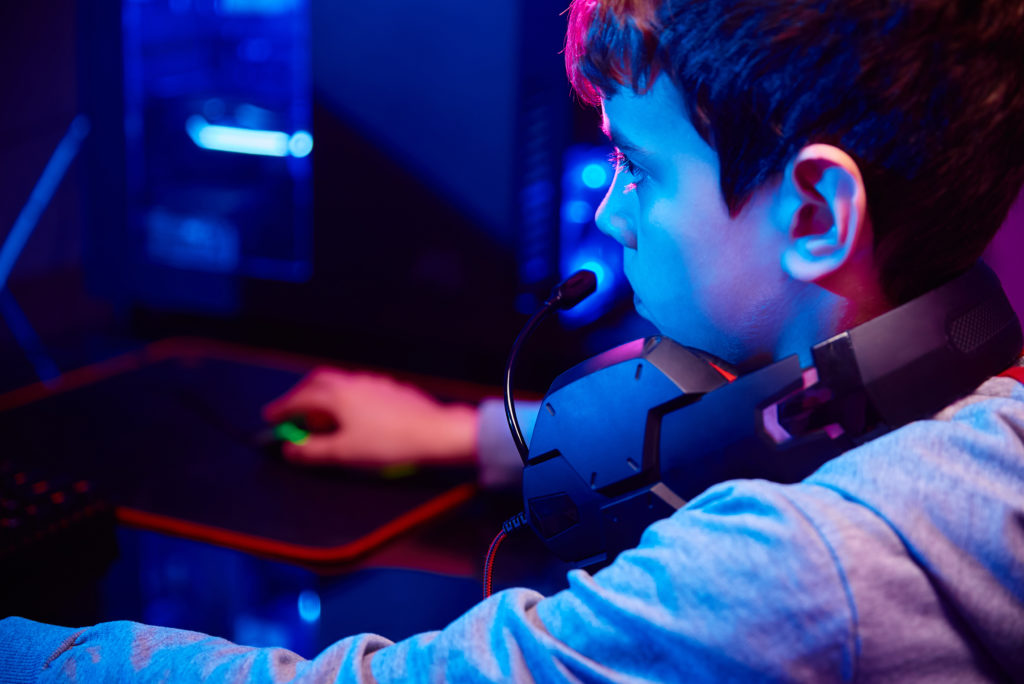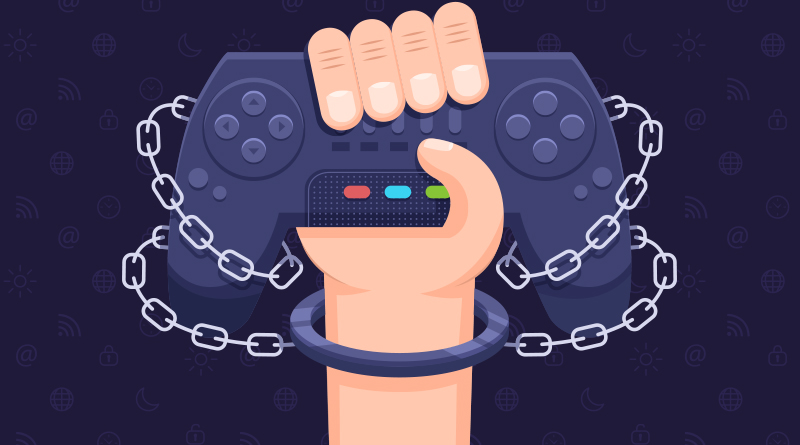Video Game Addiction: As real as it is dangerous
Children and adolescents are usually the most vulnerable ones to this scourge
By: Diana Bello Aristizábal
The World Health Organization decided to include gaming addiction as a mental health disease in its most recently updated International Classification of Diseases (ICD-11). This fact once again puts on the table a problem that has not been made visible enough despite its devastating effects on adults, children and adolescents.

“This is a disease that affects between 2 and 3 percent of players worldwide. Considering that billions of people around the planet play video games, this is a large amount,” says Cam Adair, founder of Game Quitters, a support community that offers online resources to those suffering from video game addiction.
According to Adair, who was addicted to video games himself, which was his main motivation to create the organization, every month more than a thousand people visit his website looking for help. “This problem continues to grow and today it impacts everyone equally, not just priviledged people as it was the case before.”
Another concerning aspect is that the childhood of many kids around the world is being stolen due to the fact that they start using game consoles and mobile phones at an increasingly younger age. Generally speaking, a child obtains a personal cell phone between the ages of 8 and 10, in which he has access to social networks and games, but begins to interact digitally much earlier.
 “The tragedy about all this is that many children are not offered the possibility of interacting with their environment in any other way that is not technology-related,” says the 33-year-old expert, who remembers the time when doing something as simple as connecting to the Internet was a struggle.
“The tragedy about all this is that many children are not offered the possibility of interacting with their environment in any other way that is not technology-related,” says the 33-year-old expert, who remembers the time when doing something as simple as connecting to the Internet was a struggle.
“Today digital access is permanent and that is why a wide range of people have not been able to just be children and nurture other hobbies. In the old days, we had to be creative to interact with our environment and take responsibility for our fun, while now we have the mentality that somehow the world has to entertain us.”
But this mentality doesn’t come from parents or educators exclusively, as many people think, but from an entire system that is too focused on technology and has forgotten the importance of books, handwriting and outdoor games, among other traditional forms for having fun and learning.
“It is easy to blame parents and in many cases it’s fair to do so. However, they too are constantly being pressured, even from their children’s schools, to turn to technology through educational games or devices such as the iPad.”
This doesn’t mean video games alone are harmful, but rather that we are exceeding the limits of what is considered healthy and moderate use that creates no impact in the social, emotional and physical development of minors.

“Nothing is going to replace multisensory experiences and physical contact with another human being. It’s essential for children to write by hand, touch textures and socialize, they need these stimuli,” says Erika Monroy, a clinical and educational psychologist specialized in emotional intelligence, who also states video games are damaging learning and intellectual capacity.
They are also becoming an escape from reality for many families, including adults, as both adults and children use them often times to calm the stress of everyday life or as a way to cope with difficult emotions.
“We are told that technology and video games are meant to relax us and although that may be true to an extent, if we are always running away from our emotions we don’t learn to deal with them,” says Adair, who experienced this firsthand when he began immersing himself in the world of video games after being bullied at 13 years of age.
He explains that before knowing this world he was a relatively normal kid who was going to school and played hockey. Later on, being behind a game console became his priority in life to the point of dropping out of school twice to spend 16 hours of his day gaming.
His competitive nature and the reward system that video games entail, due to the fact that players earn points when they pass a level, made him take radical steps in order to sustain his addiction, such as lying to his parents saying that he had gotten a job in an Internet cafe.

“I see this all the time in the families I work with. When people develops an addiction, they know no limits. In my case, when I left school, my parents forced me to go to work so I made up every possible excuse and jobs that didn’t exist to spend my time playing.”
According to Erika Monroy, this addiction is like any other that produces certain chemicals in the body such as adrenaline and serotonin. “It provides a sense of achievement and well-being that first relaxes and then engages, making the person want more and more of it. The ideal thing to do is to release chemicals like serotonin in a healthy way and not through a screen.”
But how do we know when there is already an addiction? According to experts, the main red flag is to stop being functional in life. Also, having sleeping and/or eating disorders, experience isolation, show signs of aggressiveness or bad temper all the time, especially when the person can’t access video games, or performing poorly at school.
“I see families in which children have not played sports for three years, are failing at school and have changed their personality. The problem is that we are crisis driven and the key to overcome an addiction is prevention,” says Adair.
Prevention measures
Cam’s case and that of so many children and adolescents who have lost control of their lives due to video game addiction could’ve been prevented with information, patience and the establishment of healthy routines at home.
“Do not bring that monster into your home before the age of six because this is something serious that should not be minimized. Children need to learn first about emotional intelligence and to socialize, that should be a priority,” Monroy recommends.
In this sense, the main advice of the American Academy of Pediatrics is not to expose children under two to any type of screen, since in this age range they are in a stage of exploring the environment which is crucial for their brain development. Meanwhile, children between the ages of 2 and 12 should not be in front of a screen for more than two hours a day.
 Computers and video game consoles should be limited as much as possible to children between 2 and 7 years old, with the exception of educational activities, which ideally should be supervised by an adult. From the age of 13 on, screen time could be extended to three hours.
Computers and video game consoles should be limited as much as possible to children between 2 and 7 years old, with the exception of educational activities, which ideally should be supervised by an adult. From the age of 13 on, screen time could be extended to three hours.
“It is very important to understand that children don’t have the maturity to manage time properly or to make a difference between the virtual and real world. This is why choosing quality content is essential as well as playing with them, whenever is possible, to understand what the games are about and determine whether or not they are appropriate,” says the psychologist.
On the other hand, establishing and adhering to routines for sleeping, eating and physical activity is the way to go. The little ones, for example, need to spend more time outdoors or making puzzles, playing with textures and sounds or listening to music.
“What we need is for them to be bored because that is how they develop frustration tolerance. Let’s not use video games as a babysitter, out of laziness to take them to do other activities, because they don’t know any other form of entertainment or simply because everyone does it, it’s okay to be different, and to pause and think about whether or not what we do at home makes sense,” she adds.
Cam Adair has a similar opinion. He says that there are countries like Tanzania, which he recently visited, where children play naturally and free and there is no expectation of being entertained and stimulated all the time.
“I think it’s necessary to make sure the child has multiple interests and multiple ways to de-stress and that should come first before video games. The reality is that most children dedicate many hours a day to technology between school and home, but if this is not limited, then when will there be time to do something else?.”
However, he recommends not removing video games completely from children’s lives, but rather getting educated on the matter and helping them find a balance. “Parents must understand that this is the culture today and be willing to listen to their children. Communication is key because that creates trust and thus it becomes easier for kids to accept agreements.”

